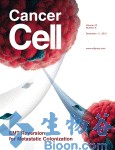JAMA:确认了与根除和胃癌有关的细菌的因素
2013-02-17 EurekAlert!中文 EurekAlert!
胃腺癌是全球癌症死亡的第二大原因。尽管胃癌发病率在某些地区正在下降,但因为在诸如拉丁美洲和东亚等高发病率地区人口的增长和老化,其死亡人数预计会在未来的几十年中增加。幽门螺旋杆菌感染了世界上超过一半的成年人,而这种细菌的慢性感染是胃癌的主要风险因素,据估计它占了全球所有病例的三分之二。 据发表在2月13日出版的《美国医学会杂志》上的一则研究披露,在一项对拉丁美洲7个不同社区人群的根除幽门螺旋杆菌(
胃腺癌是全球癌症死亡的第二大原因。尽管胃癌发病率在某些地区正在下降,但因为在诸如拉丁美洲和东亚等高发病率地区人口的增长和老化,其死亡人数预计会在未来的几十年中增加。幽门螺旋杆菌感染了世界上超过一半的成年人,而这种细菌的慢性感染是胃癌的主要风险因素,据估计它占了全球所有病例的三分之二。
据发表在2月13日出版的《美国医学会杂志》上的一则研究披露,在一项对拉丁美洲7个不同社区人群的根除幽门螺旋杆菌(一种可导致胃癌的风险因子)治疗干预结果的分析中,研究人员发现,在根除幽门螺旋杆菌的治疗干预中,地理位置、人口因素、对最初治疗的坚持以及感染的复发可能与抗菌素疗法的选择同样重要。
田纳西州纳什维尔市范德比尔特医学中心的Douglas R. Morgan, M.D., M.P.H.及其同事对幽门螺旋杆菌的复发风险进行了估计, 并评估了在用3种疗法之一进行治疗1年之后与成功根除该菌有关的因素。这项研究包括了1463名来自7个拉美社区的年龄在21-65岁的参与者,他们接受了幽门螺旋杆菌的治疗并在2009年9月至2011年7月间接受了观察。研究通过使用来自一个家庭人口普查(哥伦比亚、哥斯达黎加、尼加拉瓜)、一个大型公共临床诊所登记(智利),或家庭招募(洪都拉斯及墨西哥的两个地方)的信息对可能的参与者进行了遴选。参与者被随机分配至3个治疗组中的1组:为期14天的兰索拉唑、阿莫西林及克拉霉素(三联疗法);为期5天的兰索拉唑及阿莫西林及接下来为期5天的兰索拉唑、克拉霉素及甲硝唑(顺序疗法);或为期5天的兰索拉唑、阿莫西林、克拉霉素及甲硝唑(伴同疗法)。
在最初治疗后,1133名尿素呼气试验(UBT;这是一种用于确认幽门螺旋杆菌存在的诊断程序)呈阴性的参与者中,有1091人具有1年时的UBT 结果,其中125人变成UBT阳性,其复发风险为11.5%。研究人员发现,1年时的复发率与研究地点、家庭中孩子的数目及不坚持治疗有着明显的关系,但与治疗方式的指派没有关系。
在对基于具有肯定的1年时UBT结果的1340位参与者治疗效果的初步分析中,所估计的在1年时根除的成功率对三联疗法为80.4%、对顺序疗法为79.8%、对伴同疗法为77.8%。总体有效率为79.3%。
文章的作者写道:“在一项忽略再治疗效果的单一疗程分析中,1年时UBT阴性结果百分比为72.4%,且它与研究地点、对最初疗法的坚持、男性性别及年龄有着明显的关系。所有1463名入选参与者在1年时的治疗有效率——如果将所有缺失的UBT结果视作阳性——为72.7%。”

doi:10.1001/jama.2013.311
PMC:
PMID:
Douglas R. Morgan, MD, MPH; Javier Torres, PhD; Rachael Sexton, MS; Rolando Herrero, MD, PhD; Eduardo Salazar-Martínez, MD; E. Robert Greenberg, MD; Luis Eduardo Bravo, MD; Ricardo L. Dominguez, MD; Catterina Ferreccio, MD, MPH; Eduardo C. Lazcano-Ponce, MD, PhD; Maria Mercedes Meza-Montenegro, PhD; Edgar M. Pe?a, MD, MPH; Rodolfo Pe?a, MD, DrPH; Pelayo Correa, MD; María Elena Martínez, PhD; William D. Chey, MD; Manuel Valdivieso, MD; Garnet L. Anderson, PhD; Gary E. Goodman, MD, MS; John J. Crowley, PhD; Laurence H. Baker, DO
Importance The long-term effectiveness of Helicobacter pylori eradication programs for preventing gastric cancer will depend on recurrence risk and individual and community factors.
Objective To estimate risk of H pylori recurrence and assess factors associated with successful eradication 1 year after treatment.
Design, Setting, and Participants Cohort analysis of 1463 randomized trial participants aged 21 to 65 years from 7 Latin American communities, who were treated for H pylori and observed between September 2009 and July 2011.
Interventions Randomization to 1 of 3 treatment groups: 14-day lansoprazole, amoxicillin, and clarithromycin (triple therapy); 5-day lansoprazole and amoxicillin followed by 5-day lansoprazole, clarithromycin, and metronidazole (sequential); or 5-day lansoprazole, amoxicillin, clarithromycin, and metronidazole (concomitant). Participants with a positive (13) C-urea breath test (UBT) 6 to 8 weeks posttreatment were offered voluntary re-treatment with 14-day bismuth-based quadruple therapy.
Measurements Recurrent infection after a negative posttreatment UBT and factors associated with successful eradication at 1-year follow-up.
Results Among participants with UBT-negative results who had a 1-year follow-up UBT (n=1091), 125 tested UBT positive, a recurrence risk of 11.5% (95% CI, 9.6%-13.5%). Recurrence was significantly associated with study site (P = .03), nonadherence to initial therapy (adjusted odds ratio [AOR], 2.94; 95% CI, 1.31-6.13; P = .01), and children in the household (AOR, 1.17; 95% CI, 1.01-1.35 per child; P = .03). Of the 281 with positive posttreatment UBT results, 138 completed re-treatment, of whom 93 tested UBT negative at 1 year. Among the 1340 who had a 1-year UBT, 80.4% (95% CI, 76.4%-83.9%), 79.8% (95% CI, 75.8%-83.5%), and 77.8% (95% CI, 73.6%-81.6%) had UBT-negative results in the triple, sequential, and concomitant groups, respectively (P = .61), with 79.3% overall effectiveness (95% CI, 77.1%-81.5%). In a single-treatment course analysis that ignored the effects of re-treatment, the percentage of UBT-negative results at 1 year was 72.4% (95% CI, 69.9%-74.8%) and was significantly associated with study site (P < .001), adherence to initial therapy (AOR, 0.26; 95% CI, 0.15-0.42; P < .001), male sex (AOR, 1.63; 95% CI, 1.25-2.13; P < .001), and age (AOR, 1.14; 95% CI, 1.02-1.27 per decade; P = .02). One-year effectiveness among all 1463 enrolled participants, considering all missing UBT results as positive, was 72.7% (95% CI, 70.3%-74.9%).
{nextpage}Conclusions and Relevance One year after treatment for H pylori infection, recurrence occurred in 11.5% of participants who had negative posttreatment UBT results. Recurrence determinants (ie, nonadherence and demographics) may be as important as specific antibiotic regimen in determining the long-term success of H pylori eradication interventions. Study findings are relevant to the feasibility of programs for the primary prevention of gastric cancer in high-incidence regions of Latin America.
本网站所有内容来源注明为“梅斯医学”或“MedSci原创”的文字、图片和音视频资料,版权均属于梅斯医学所有。非经授权,任何媒体、网站或个人不得转载,授权转载时须注明来源为“梅斯医学”。其它来源的文章系转载文章,或“梅斯号”自媒体发布的文章,仅系出于传递更多信息之目的,本站仅负责审核内容合规,其内容不代表本站立场,本站不负责内容的准确性和版权。如果存在侵权、或不希望被转载的媒体或个人可与我们联系,我们将立即进行删除处理。
在此留言













#根除#
90